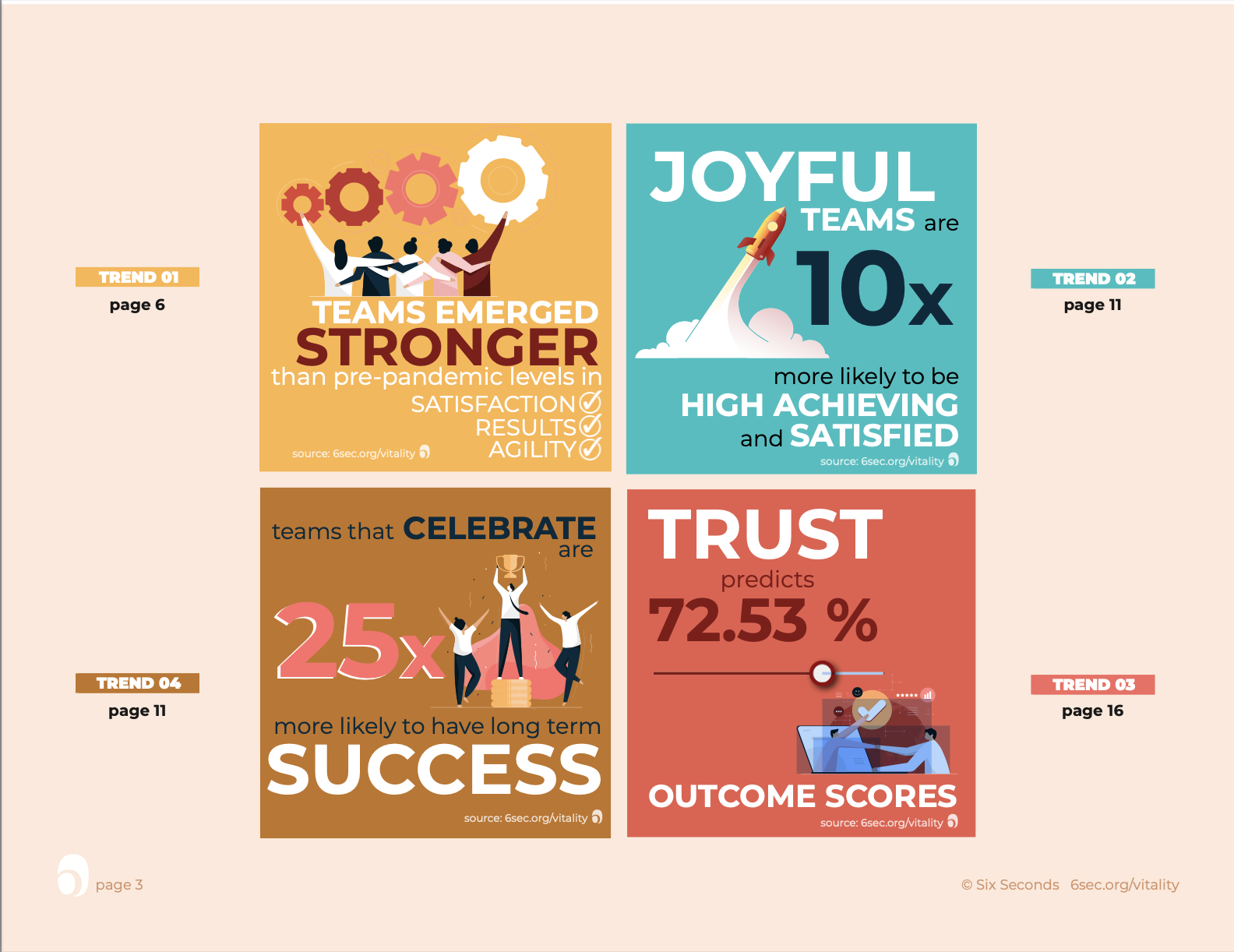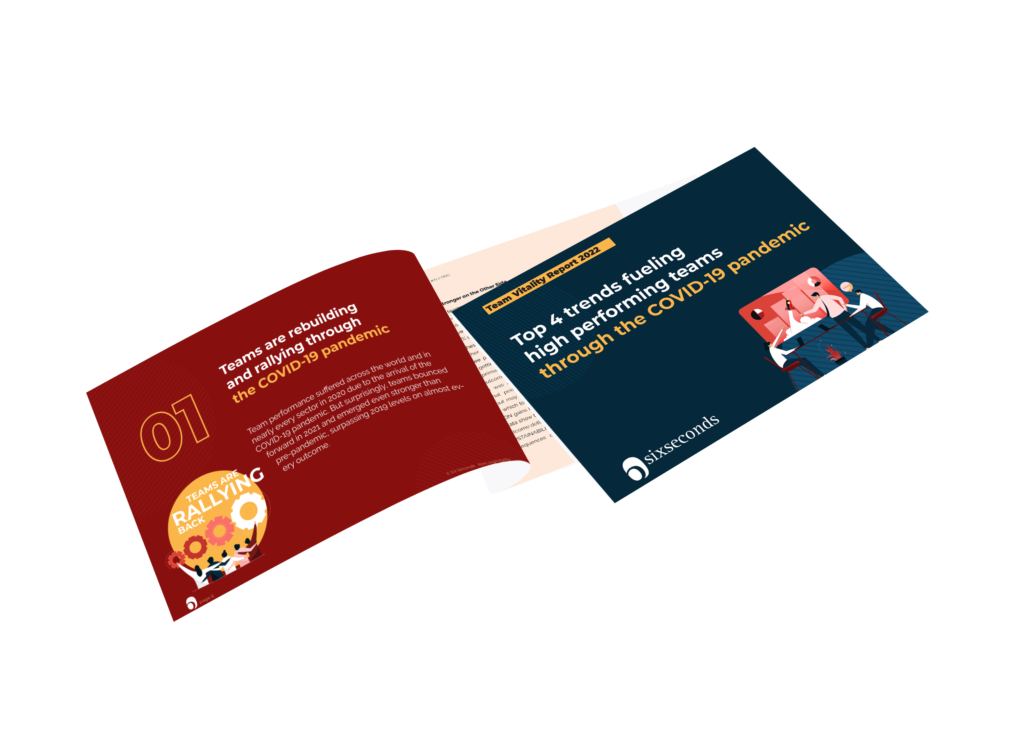3 Practical Management Tips to Bring Out People’s Best in 2023
Using emotional intelligence to increase engagement
One of the hardest aspects of leadership is prioritizing people when there are a million tasks to get done. There’s a neuroscience reason why this balance is difficult: When we focus on tasks, our brains shut off other functions, including processing emotional data. “In our high-stress lives, we are forcing our brains to juggle,” says Six Seconds CEO Joshua Freedman, “and when there are too many balls in the air, we drop some. Unfortunately, we often drop the fragile glass ones that create trust and partnership and respect.”
Here are 3 practical tips to practice emotional intelligence as a manager, and hopefully, bring out people’s best.
1. Amplify the quieter voices on your team.
Research at Google found two group behaviors to be highly predictive of team success: everyone speaking roughly the same amount and actively listening to one another. Remote or hybrid work presents extra challenges for both of these. For one, we don’t have the nonverbal cues that normally alert us that someone else is going to speak, and two, we have a million distractions at our fingertips when we’re meeting online.
How can you use this information to bring out people’s individual and collective best? Amplify people’s voices who tend to be more reserved and quiet, especially in online meetings. When you lift up those who can tend to get drowned out – because of position, personality or any other reason – you send a powerful message: Everyone here matters. This raises the trust level of not only your quieter team members, but of everyone- and trust and safety is the foundation of sustainable high performance. Second, model exceptional listening. Listening is more important and deeply connected to people’s basic emotional needs than most leaders recognize. It’s the fragile glass ball we drop when we’re juggling too much, but it really shouldn’t be.
Get insights on why listening is crucial – and practical tips to become an exceptional listener →
How to use emotional intelligence to leaders implement this finding with emotional intelligence:
- Observe the conversational equality within your team and use your power as an amplifier. Some people are quiet because of their personality style, while others may be quiet because they don’t have the positional power or influence. In both cases, their comments are often ignored, which reduces their feelings of safety and also signals to other group members that, “Here, it’s okay to ignore some people,” which will reduce safety for all. Use your power to amplify those voices by calling the group’s attention to the contributions that are being overlooked: “I want to circle back to Joanna’s comment earlier, I’m not sure everyone heard it. Joanna, would you mind repeating your observation?”
- Model active listening. Close your laptop, make eye contact, repeat back what you’ve just heard and ask for clarifications. Set that as the standard for the group during meetings.
Does it matter what team members say, or just that they take turns and listen? The next question dives deeper into this topic.
2. Listen – and respond – to more than just people’s words.
Research from Wharton professor Michael Parke found that when employees express emotions at work, and coworkers respond empathetically, it unlocks a whole range of productive and beneficial outcomes for the group: more creativity, more effective problem solving, an increased ability to generate new ideas, et cetera. The problem is that many employees don’t feel safe expressing genuine emotions at work – over 47% don’t, per research from Joblist. One way to create a culture of emotional honesty? Observe nonverbal communication cues and follow up on them – with the group or 1-on-1. Who’s sitting forward, who’s holding back? Who’s frowning? Who’s tone of voice is escalated or tight? Who’s camera and microphone are turned off? By attending to these cues and responding to them like you would verbal communication, you can identify if there’s an unspoken issue about safety and build trust by tuning into it.
5 tips to unlock your team’s potential, including responding to nonverbal communication →
How leaders can implement this finding with emotional intelligence:
- Watch and listen for cues that show discomfort or dissatisfaction and ask good questions about those. There’s a vast quantity of data in any interpersonal interaction. To access this data, pause to watch the meeting — who’s camera is off? Who had a slight smirk or eye roll while someone else spoke? Sometimes this is best addressed one-to-one after a meeting: “I noticed that in the meeting you were frowning and didn’t say much, and I’m hoping you’d be willing to tell me a bit about what you’re perceiving that I may have missed.” Or, if it’s a generalized feeling, address the group: “I‘m noticing there are mixed emotions about this topic. I want to take a moment to hear some of the feelings in the room.” The more this is practiced, the quicker it simply becomes the norm for the group.
- Adopt a mindset that all emotions have value, and embrace the full range of emotions. Validate people’s feelings and explore them together. Plutchik’s Wheel of Emotions is a great resource to explore the message and purpose of dozens of emotions, even challenging ones that many of us have been socialized to ignore or suppress.
3. Carve out time for joy and celebration at work.
While fun team building experiences have traditionally been used as rewards outside the day-to-day, a growing body of research suggests top teams and companies take a different approach: They integrate joy and celebration into the everyday as a means to build the capacity to do great work. What could you do today, tomorrow, or next week to bring more joy to your team? Who’s work could you recognize, publicly or privately? Who could you connect with on a personal level? These elements aren’t “nice to have” or “extra,” they’re highly predictive of team performance across countries, industries and company sizes, per Six Seconds 2022 Workplace Vitality Report – and they could be the difference for your team.
Download the full Workplace Vitality report for more tips and insights →

2022 Workplace Vitality Report
Top 4 trends fueling high performing teams through the COVID-19 pandemic
The 2022 edition of the Workplace Vitality Report is here – focused on team performance at work and the impact of the COVID-19 pandemic. These 4 key findings can help you optimize team performance with emotional intelligence.
Features
What you’ll get:
✓ New global research on the impact of the COVID-19 pandemic on work teams and what fueled the top performing teams
✓ Expert analysis from the world’s largest organization dedicated to emotional intelligence
✓ Credible data from a validated psychometric assessment presented in visually engaging ways
✓ Practical tips and strategies to enhance climate, increase engagement, and boost performance with your team

- Emotional Intelligence at Work: The Free, Easy Win Most Managers Are Missing - June 18, 2024
- Krish and Anabel: SEL Pioneer and Mentee Share 6 Life Lessons on Empathy, Integrity, and Emotional Intelligence - June 3, 2024
- Emotional Intelligence at Work: Is There Hope for Toxic Workplaces? - May 14, 2024


They incorporate celebration and joy into daily life to increase their ability to produce excellent work.